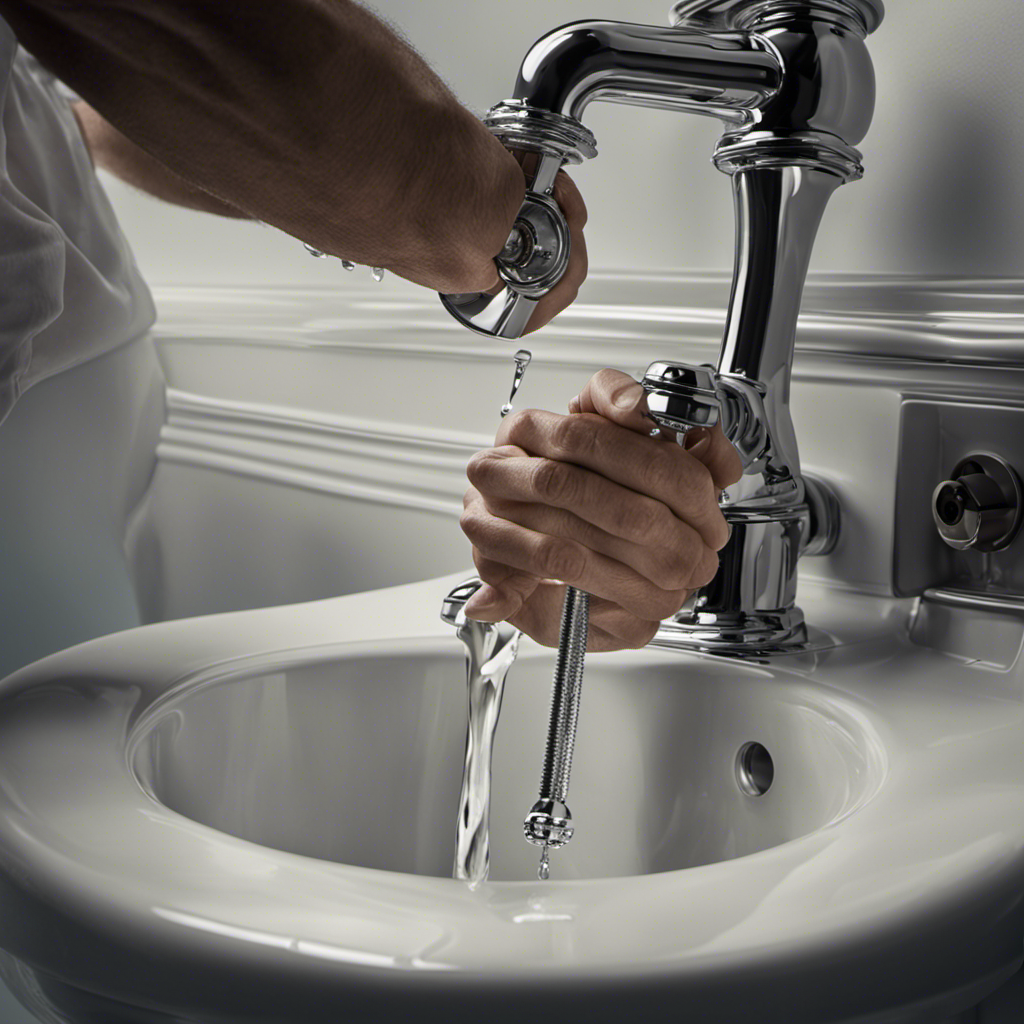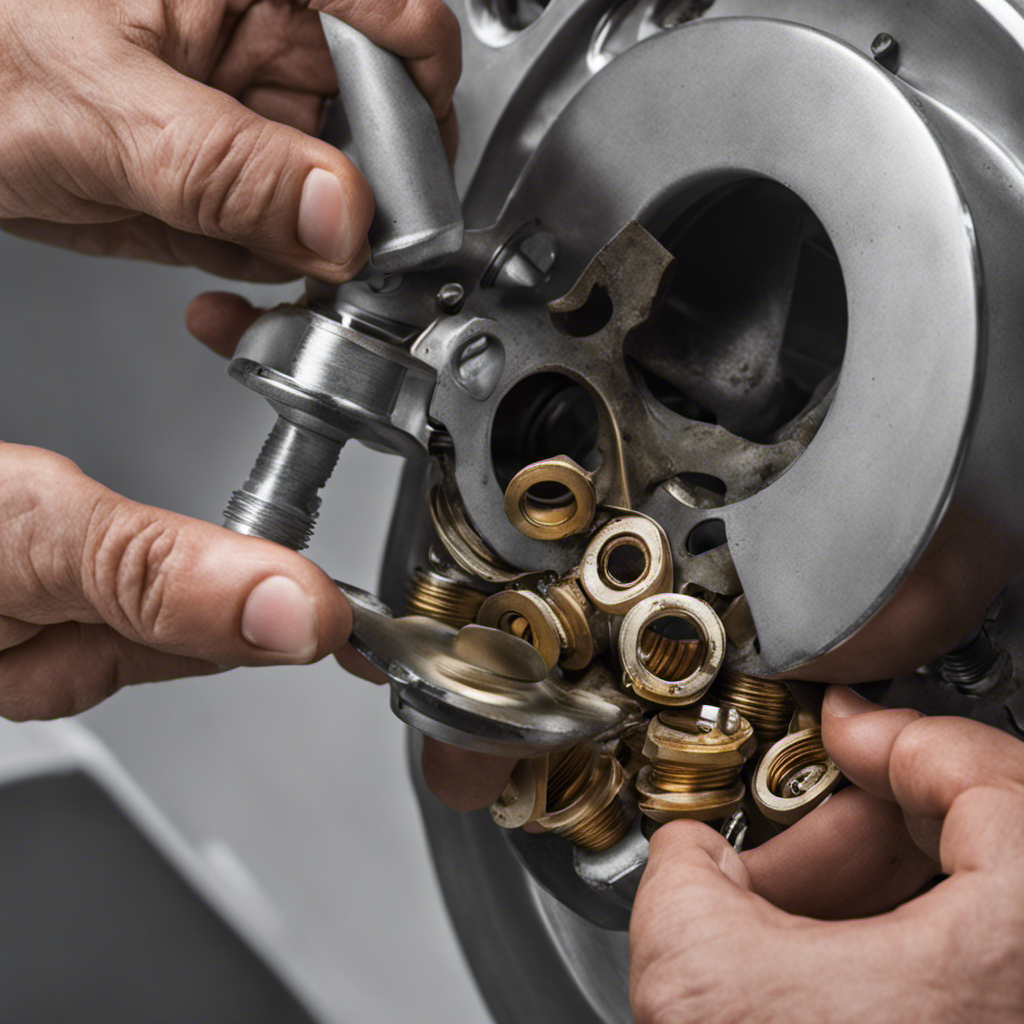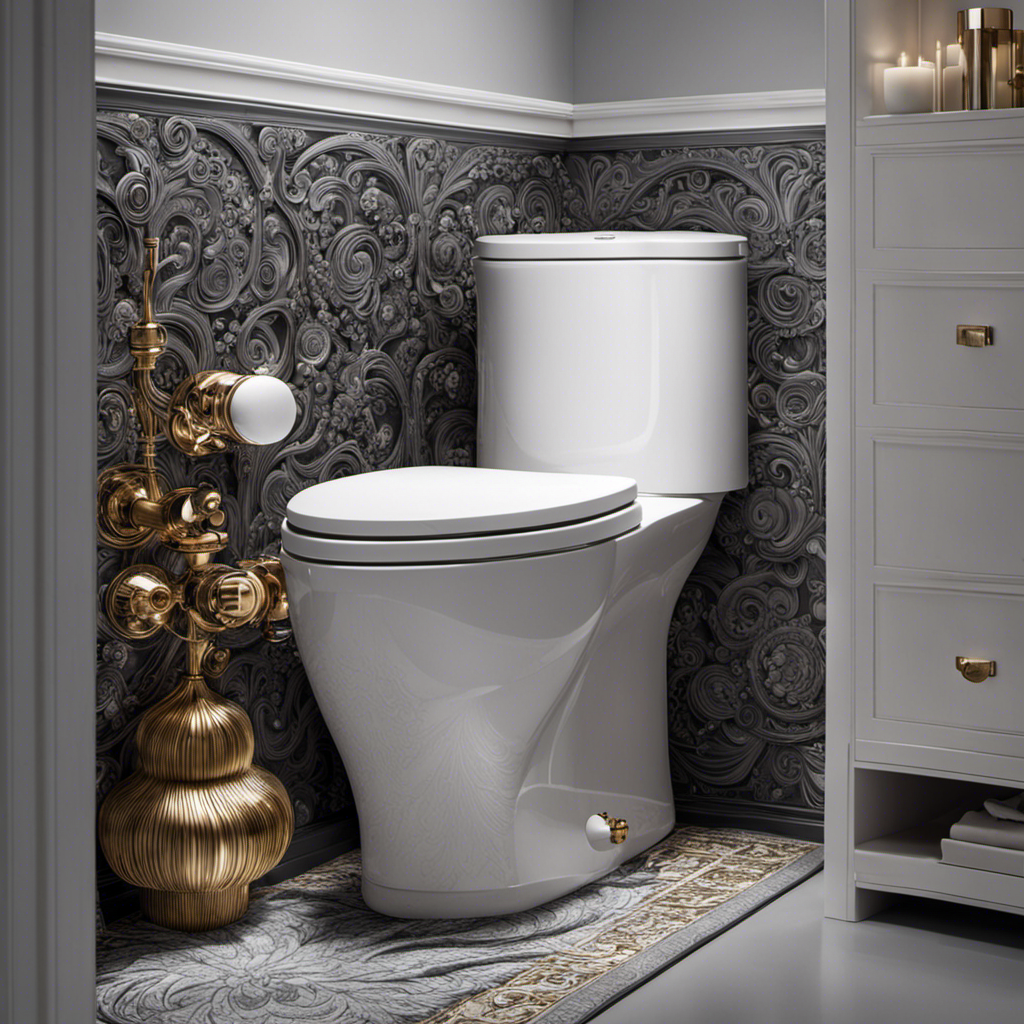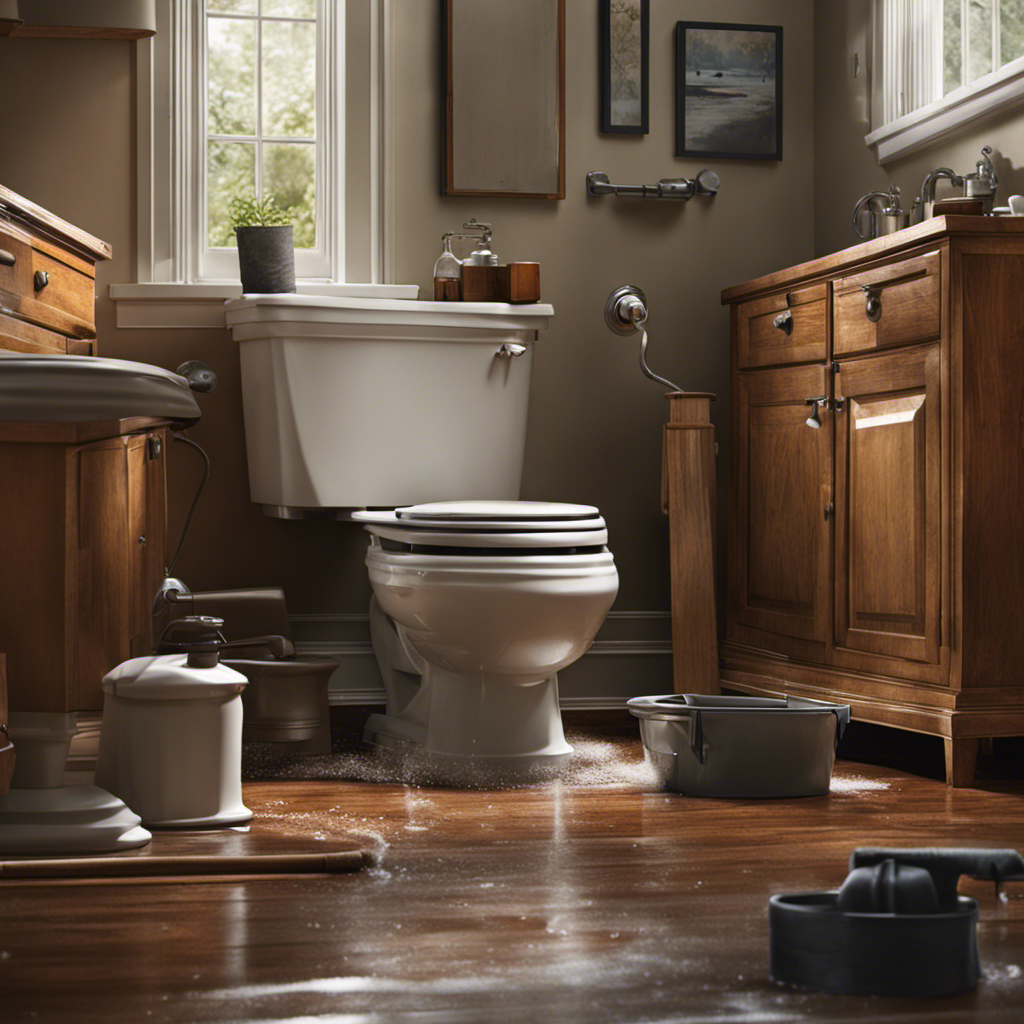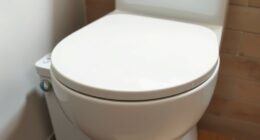Did you know that a leaking toilet can waste up to 200 gallons of water per day?
As a homeowner, it’s crucial to know how to fix this common issue.
In this article, I will guide you through the step-by-step process of fixing a leaking toilet.
By following these simple instructions, you can save water, money, and prevent further damage to your bathroom.
So, let’s get started and put an end to that pesky leak!
Key Takeaways
- Identifying the source of the leak is crucial before attempting any repairs or maintenance.
- Shutting off the water supply near the base of the toilet is necessary to stop the water flow.
- Inspect the toilet tank for cracks or damage and replace any faulty parts with compatible replacements.
- Proper sealing and reassembling of the toilet, including replacing the wax ring, is essential for a watertight seal.
Identifying the Source of the Leak
First, you’ll need to locate where the leak is coming from in order to fix it. Finding a professional plumber is crucial if you’re unsure about fixing it yourself.
Common causes of toilet leaks include a faulty flapper valve, a worn-out flush valve, or a loose or damaged water supply line. To identify the source of the leak, start by checking the water level in the tank. If it’s too high, the water might be overflowing into the overflow tube.
Another common sign is water pooling around the base of the toilet, indicating a wax seal problem. Once you’ve pinpointed the source, you can move on to shutting off the water supply, which we’ll discuss in the next section.
Shutting off the Water Supply
To stop the water flow, you’ll need to locate and turn off the valve near the base of the toilet. The valve controls the flow of water into the toilet tank, so if you have a leak or need to perform any repairs, shutting off the water supply is the first step. Look for a small knob or lever near the bottom of the toilet, usually on the wall or floor. Turn it clockwise to shut off the water. This will stop the water from flowing into the tank and prevent any potential damage or flooding.
Water valve maintenance is crucial for preventing leaks and maintaining proper toilet water pressure. Always remember to shut off the water supply before attempting any repairs or maintenance on your toilet.
Inspecting and Replacing Faulty Parts
One important step in inspecting and replacing faulty parts is checking for any cracks or damage in the toilet tank.
To troubleshoot common issues with a leaking toilet, it is crucial to carefully examine the tank for any signs of wear and tear. Start by removing the lid and visually inspecting the tank for cracks or leaks. Pay close attention to the bottom of the tank, where cracks are most likely to occur.
If any damage is detected, the next step is to select the right replacement parts. This may include replacing the fill valve, flush valve, or flapper. It is important to choose parts that are compatible with your specific toilet model.
Once the appropriate parts have been obtained, the next section will cover the process of sealing and reassembling the toilet.
Sealing and Reassembling the Toilet
After inspecting and replacing faulty parts, you can begin sealing and reassembling the toilet. Proper maintenance is key to preventing leaks and ensuring the toilet functions properly. Here are some common causes of leaks and how to address them:
- Faulty wax ring: Remove the old wax ring and replace it with a new one to create a watertight seal between the toilet and the floor.
- Loose tank bolts: Tighten the bolts that secure the tank to the bowl to prevent water from leaking out.
- Cracked tank or bowl: If you notice cracks, you’ll need to replace the affected part to eliminate leaks.
By addressing these issues and properly sealing and reassembling the toilet, you can prevent leaks and ensure the toilet functions as it should.
Now, let’s move on to testing for leaks and ensuring proper functionality.
Testing for Leaks and Ensuring Proper Functionality
Now, it’s time for you to check for any leaks and make sure the toilet is functioning properly.
To conserve water, it is important to address any issues with your toilet promptly.
Start by examining the base and surrounding area for any signs of water. If you notice a leak, tighten the bolts connecting the tank and bowl.
Another common problem is a running toilet, which can waste a significant amount of water. To fix this, adjust the flapper or replace it if necessary.
Additionally, check the fill valve and adjust the water level to the appropriate height.
Frequently Asked Questions
How Can I Prevent My Toilet From Leaking in the First Place?
To prevent my toilet from leaking in the first place, I take several preventative measures. By regularly checking for common causes like loose connections and worn-out parts, I can ensure a leak-free toilet.
What Should I Do if My Toilet Is Leaking From the Base?
If my toilet is leaking from the base, I would first shut off the water supply valve and call toilet repair services. Common toilet leaks at the base can be caused by a faulty wax ring or loose bolts.
Is It Safe to Use a Leaky Toilet or Should I Refrain From Using It Until It’s Fixed?
Using a leaky toilet can pose potential health risks and may lead to water damage. It’s important to address toilet leaks promptly to avoid these issues. I recommend refraining from using it until it’s fixed.
How Can I Determine if the Leak Is Caused by a Faulty Flapper Valve?
To diagnose a leaking toilet, first, check if the water is continuously running. Then, inspect the flapper valve for any signs of damage or wear. To replace a faulty flapper valve, follow these steps.
Are There Any Specific Tools or Materials I Need to Fix a Leaking Toilet?
To fix a leaking toilet, you’ll need specific tools and materials like a wrench, plunger, and a new flapper valve. These items are essential for successful toilet repair and stopping those annoying leaks.
Conclusion
In conclusion, fixing a leaking toilet can be a challenging yet rewarding task.
By carefully identifying the source of the leak and shutting off the water supply, you can effectively address the issue.
Inspecting and replacing faulty parts, followed by sealing and reassembling the toilet, will ensure a proper fix.
Testing for leaks and ensuring proper functionality is crucial for long-term success.
Remember, taking the time to fix a leaking toilet not only improves functionality, but also promotes a harmonious and peaceful bathroom experience.
